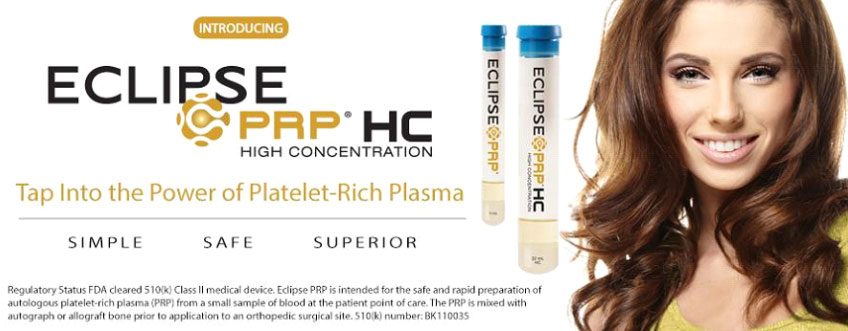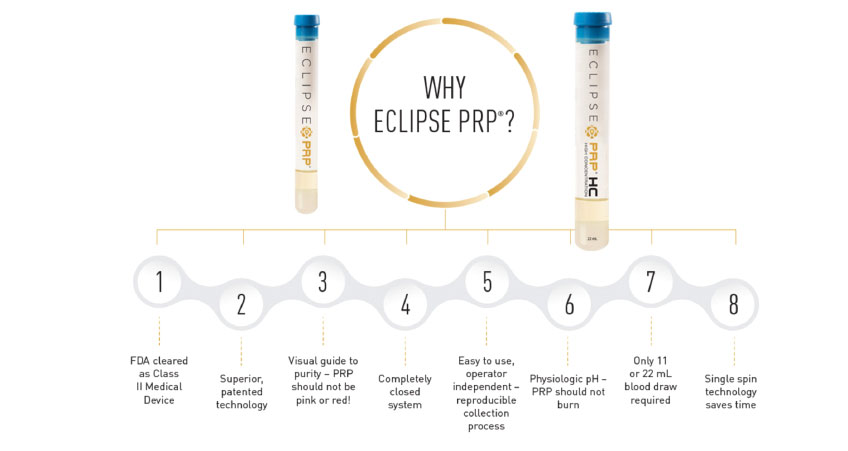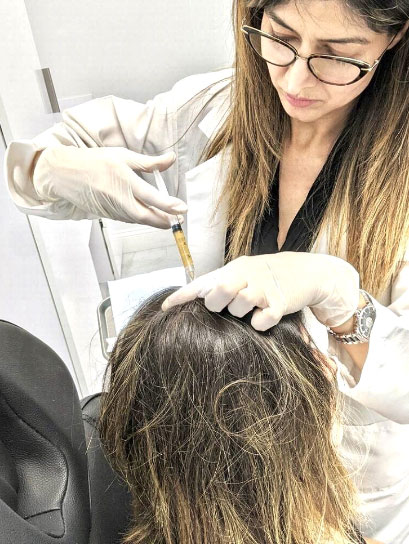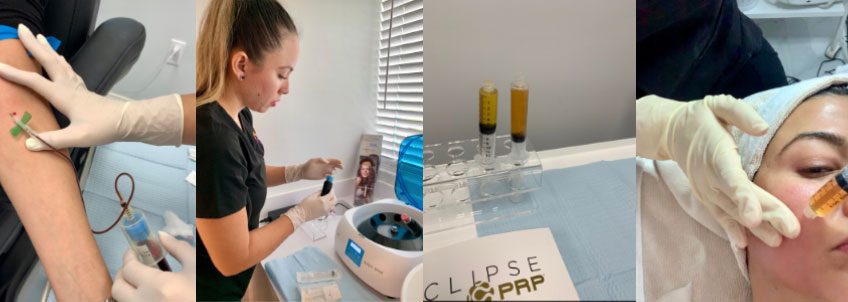
PRP is a high concentration of platelets surrounded in its own plasma. A small amount of blood is drawn and the red cells are isolated from the platelet-rich plasma. Since the autologous Platelet-Rich Plasma (PRP) is processed from the patient’s own blood, there is virtually no risk of an allergic reaction or rejection.
What do platelets do:
Platelets are a natural source of a number of growth factors in their natural and biologically-determined ratios. Platelets release growth factors which regulate the healing cascade by signaling to surrounding cells to repair damaged tissue and regenerate new tissue.
How is PRP obtained:
A small amount of blood is obtained from the patient similar to a routine blood test. Once the blood is drawn, it is then placed into a centrifuge device. The centrifuge spins the blood at high speeds in order to separate the blood into red blood cells and concentrated platelets. Once the blood components are separated, the red blood cells are discarded and we are left with concentrated Platelet Rich Plasma (PRP) that is ready to be used in the treatment process.
What differentiates our system:

PRP injection for hair restoration:
Platelet Rich Plasma, commonly referred to as PRP, is the latest non-invasive treatment option for hair restoration. PRP hair therapy is a procedure in which the Platelet Rich Plasma is injected into the scalp to stimulate and reactivate hair follicles in order to promote new hair growth. PRP hair therapy has been clinically proven to increase hair count and hair thickness in many patients due to platelets being rich in growth and healing factors. This treatment is a quick and safe option to promote hair growth and can be performed in the office with no downtime. It is recommended to undergo a series of 3-5 treatments spaced one month apart, followed by maintenance treatment performed every 6-9 months.

PRP microneedling/Vampire facial:
The combination of microneedling with PRP is more effective than microneedling alone or applying PRP alone. While both effective individually, it is the combination of the two treatments that provide a vital foundation necessary for maximum absorption, reduced healing time and optimal results.
Numerous studies prove the efficacy of microneedling alone. For certain conditions, such as acne scars, the addition of PRP to the treatment amplifies the results and speeds recovery. This is because PRP uses stem cell science to enhance healing through its high concentration of growth factors. From orthopedics to aesthetics, PRP is transforming wound healing.
When used in conjunction with microneedling, the tiny perforations created during the treatment deliver the platelet-rich plasma to the deepest layers of the skin. This stimulates the growth of new, healthy skin cells which help smooth skin and scar tissue over time.

